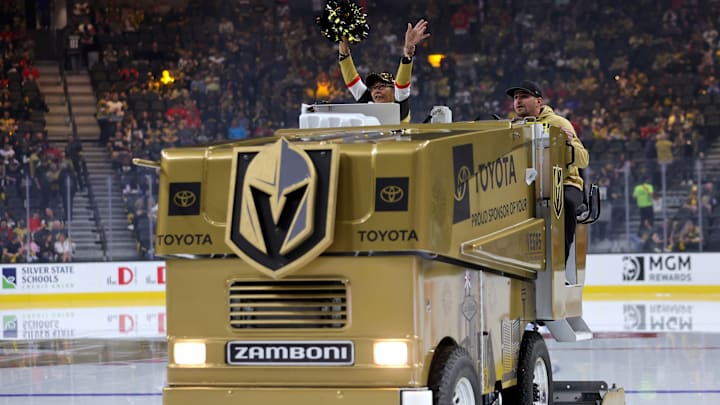It's intermission. You're walking up the steps to get yourself a hot dog and a soda before the start of the second period. Nothing is really happening on the ice unless the little mites are playing their game. However, there is one important job happening. The Zamboni driver is taking a very specific route around the ice. Once he's done, the ice looks wet, but what exactly happened?
First, let's talk about the machine that is now known as the "Zamboni." First of all, Zamboni is a brand, not the actual name of the machine. It's actually an "ice resurfacer." Similar to how cotton swabs are now "Q-tips" and bandage strips are now "Band-Aids," Zamboni had such dominance on the ice resurfacer market.
The first Zamboni was invented in 1949 by American Frank J. Zamboni. Mr. Zamboni worked on machinery for many different industries, including cars, refrigerators, ice makers, and others. However, the family eventually built an ice rink in California. Back then, resurfacing the ice was a very manual and tedious process. So, Frank Zamboni worked for years to simplify the process using machinery.
He eventually switched his approach from scraping the ice (which gave an uneven surface) to shaving the ice, collecting the shavings, and adding water to replace the ice. That is the first version of the modern Zamboni. Then called the "Model A," it used surplus war parts to build the machine. He eventually used a Jeep to build around his machine thanks to its steering ability.
Fast forward to the late 1970s, and then the Zamboni of today was created. It replaced the air cooler with a liquid cooler, eventually became battery-powered (reducing emissions within the arena), and automated many of the processes that were previously manual.
Today, a Zamboni will wash the ice to remove all the dirt and grime before scraping off a little more than a millimeter off the top. There are three pipes coming from Zamboni; one to deliver the wash water, one to suck up the dirty water, and one to lay down water that will become the new surface of the ice sheet.
There are, of course, other brands of ice resurfacing machines. Other less popular brands include the Olympia and the Okay Elektra, which is an electric ice resurfacer. No matter the brand, these machines aren't cheap. The least expensive can cost upwards of $130,000, but most new models cost north of $200,000.
With over 12,000 Zambonis delivered around the world, the machine is the choice of most hockey enthusiasts, including the NHL and international competitions. Each resurfacing with the new machines takes about 12 minutes, which is more than half of the 20-minute NHL intermission. It's still the most efficient form of resurfacing. Sometimes, even 70 years later, an invention stands the test of time. The Zamboni is one of those innovations.
